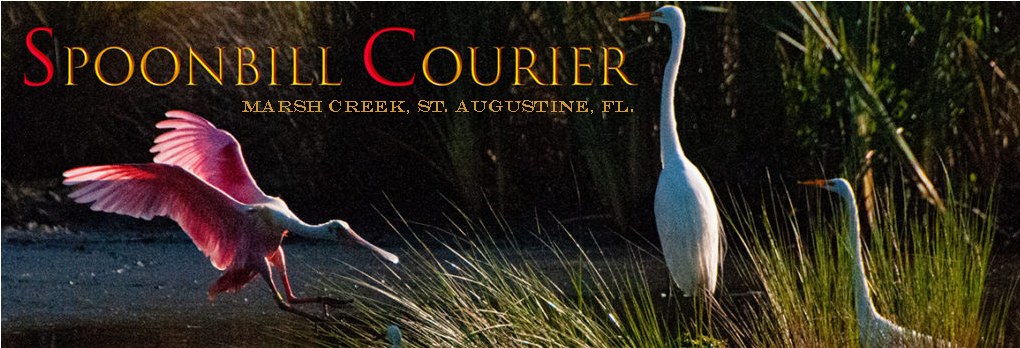
By Meri-Kathryn Peed

Living in Florida, we have the wonderful opportunity to learn about an abundance of wildlife. Some of us have our favorites: shore birds, freshwater birds. butterflies, deer, rabbits, fish, dolphins, manatees and yes for some of us, alligators. I have always found alligators fascinating, ever since my first visit to the St Augustine Alligator Farm in 1952 while visiting my grandparents in Daytona Beach. To me it was like seeing living dinosaurs.
So many things about alligators impress me, that when I was living in Pawleys Island SC, I was studying to be an Alligator Docent. Huntington Beach State Park has a huge population of alligators, and they offer daily walks for visitors to learn more about these incredible creatures. As a result, they have a group of volunteers called Alligator Docents, to do just that. Well, I didn’t finish my training before I moved to St Augustine and now live a few miles from the St. Augustine Alligator Farm.
What could be more perfect than to be a grandparent member where I can take as guests up to 8 grandchildren at a time under the age of 18 free as many times as I like, AND I can go any day I like. Additionally, it is a world-renowned bird rookery, so if you like spoonbills, storks, herons, egrets by the 100’s, this is the place for you. Also, as a member you receive a copy of their newsletter, The Investigator, which always has great photos and Information in it.

Well, I am sure you may not have as much interest in alligators as I do but I thought you might be interested in some things I learned from the staff and the newsletter about what happens to the residents during a hurricane.

The farm (which is really a zoological park) has an emergency plan they follow when expecting a major storm. First, the alligators themselves can sense the change in the atmospheric pressure, so they go to the bottom of the ponds. Then the park personnel lower the water levels which will quickly fill back up during the anticipated deluge. As for the other residents, park personnel can capture all the primates and birds that need to be protected in 3-5 hours. They are put in sky kennels (like the ones our dogs travel in in airplanes) and are transferred to the Komodo Dragon building. That structure is the strongest building on Anastasia Island with steel frame and concrete walls. Long-legged birds like storks and cranes are housed in the public restrooms. They are secure, have plenty of space and the restrooms are very easy to clean up after the storm.
I hope this article has done 2 things. Those of us concerned about the animals can be reassured about their safety and our security, Secondly, I’d hope that you might want to become a member of the St Augustine Alligator Farm and support this wonderful zoological park.
If you want to learn more about alligators, please visit the park. Maybe you’ll see me, and I can serve as a not-quite credentialed alligator docent and share a few more facts about these impressive creatures.






Very informative Meri-Kathryn! I never thought about what happens to the creatures & birds in the Park. Moving the Galapagos tortoise must be a challenge,. The Alligator Farm is a worthwhile cause, thank you for reminding us to support it.